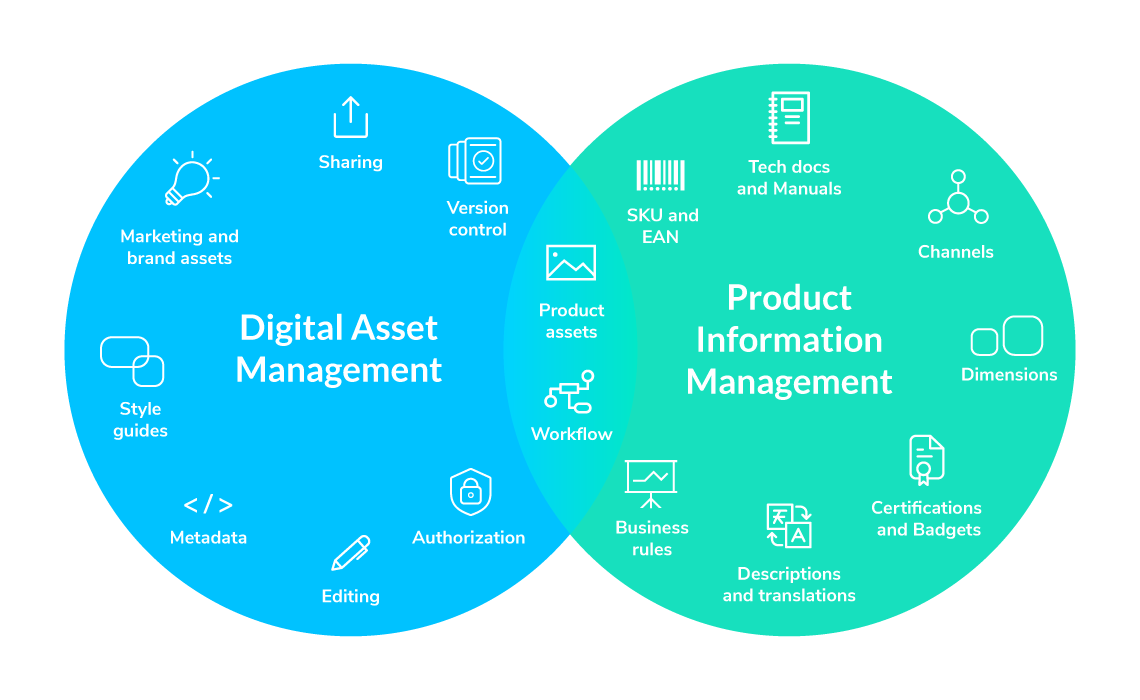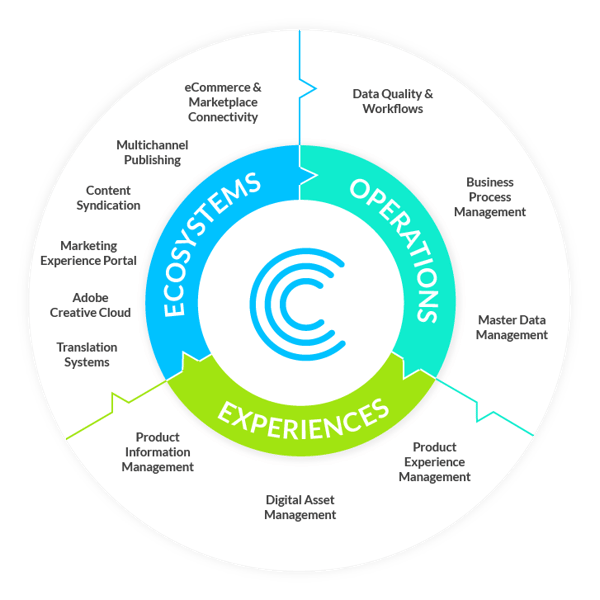Purchasing decisions are no longer based solely on traditional differentiators such as price and quality. Today, it’s all about providing the best buying experience. With 86% of customers willing to pay more for a better experience, companies must provide relevant interactions to support them through increasingly complex buying scenarios. The only remaining area where you can outpace the competition is in customer experience (CX). Those that successfully provide an emotional connection with customers outperform the sales growth of their competitors by 85%.
This is where Product Information Management (PIM) and Digital Asset Management (DAM) can help – by combining and providing contextualized and personalized product information and digital assets. While PIM and DAM store different types of content, when the two systems are connected it’s possible to build a comprehensive view of all product content. But what does data about your products have to do with customer experience, you might ask? One ecommerce study found that 20% of purchase failures are potentially a result of unclear or missing product information. However, a positive customer experience relies on building trust in your brand. To foster this, you need to provide consistent data quality. Even if your data mismanagement is unintentional, damage can grow out of control very quickly.
To build brand loyalty, you can offer personalized product content and a consistent shopping experience. Businesses from various industries are already reaping the rewards of investing in personalization. In fact, 78% of B2B marketers say higher quality and more efficient content creation led to increased content marketing success. Producing content that resonates with customers is indeed a worthy investment. But simply creating great content is not enough. Brands and manufacturers must ensure that product content is personalized, reaching and engaging the target audience.
Deliver a personalized customer experience for digital commerce success
Today, digital commerce needs to be frictionless — and include omnichannel shopping, personalized messaging, and engaging customer experiences. According to McKinsey, customers now view personalization as the default standard of engagement. In fact, 87% of buyers expect a personalized and consistent experience across different shopping channels. The pressure is clearly on for companies that do not yet offer a personalized customer experience, but there's an opportunity for those that get it right.
When B2B customer experience professionals were asked which actions or investments will have the greatest impact on customers, 62% selected investments focused on understanding individual customer characteristics, such as needs, challenges, and future direction. Customers respond positively when brands show their investment in the relationship, not just the transaction. For that, you must get to know your customers and invest in longer-term relationships. The more you know about your target audience, the better you will understand the customer journey before, during, and after the sale.
As Gartner notes, organizations that focus on helping their customers with personalized messaging can expect a 16% greater impact on business results than those that don't. So, if you don't want to lose prospects to your competitors, you need to align your marketing and sales activities with your customers' expectations. A digital commerce strategy requires centralized data to deliver complete, consistent, and personalized information across different channels. However, most companies lack the necessary data management to keep product data and digital assets aligned. This hinders the content creation process and prevents companies from delivering the rich product content that customers expect.
How to provide a seamless buying experience using rich media?
The most compelling, rich media captures the attention of eyes, hearts, and minds throughout the buyer’s journey. According to the 2020 Retail Reimagined survey, informative product descriptions and clear product images are among the top three factors for a great online shopping experience. Besides, 86% of consumers now rely on digital shelf experience to judge product quality.
A seamless buying experience is no coincidence – it's the result of fine-tuning each element of your product data. To help give you a nudge in the right direction, we’ve created a quick list of best practices:
- Provide all product information details: Quality product descriptions can potentially increase conversion rates by 78%. You can go further with the product features and build an emotional connection by providing the necessary details.
- Use high-quality images: 67% of consumers say that the quality of a product image is “very important” in their purchasing decision. Without a compelling, high-resolution photo, the ability to make an online sale falls dramatically.
- Use compelling product videos: Video has become an increasingly powerful marketing tool. In 2020, 96% of consumers increased their online video consumption, and 9 out of 10 viewers said that they wanted to see more videos from brands and businesses.
- Include social proof: Make sure to include customer reviews on your product page and be completely transparent when doing so. According to Gartner, more than half of U.S. consumers consult reviews when they know which type of product or service they want to buy but haven’t settled on a specific provider yet.
- Offer an omnichannel experience: Brands with a top omnichannel customer engagement see a 9.5% yearly increase in annual revenue, compared to 3.4% for poor omnichannel brand strategies.
How to find the right digital asset when you need it the most?
According to Adobe, 85% of marketers are under pressure to more quickly, and 76% agree that personalization is driving an increased need for more assets. Yet, delivering personalization at scale requires organizations to collect, store, manage, access, and distribute assets effectively. Traditional asset storage and management systems are no longer able to keep up with today’s digital commerce demands. Manually managing an organization’s assets can take a massive amount of time and resources. Indeed, employees can spend up to a fifth of their time just looking for internal information.
So, how can organizations overcome their content challenges and deliver rich media? The answer lies in an integrated PIM and DAM approach to streamline asset flow and fulfill demanding production and publishing needs. Contentserv provides users with a very easy-to-use Google-like Marketing portal. Internal and external users (e.g., agencies) can easily search and filter products and all related assets. Managing all products and associated media assets in a centralized solution enables you not only to find what you need immediately, but also ensures that everything is up-to-date and in line with your growing customer experience standards. Dated content, incorrect information, or, for example, inappropriate imagery won’t be part of your search results, thanks to data governance and workflows.
How to personalize product offerings?
Personalization requires some homework on your end, but it’s worth it! Quick and seamless access to accurate product information and a pleasing purchase experience is what today’s customers demand. To make your buyer seen as a person, not just a lead, you need to know more about them to provide the personalized experiences they expect: An experience specific to each customer through offers, messaging, imagery, recommendations, and more.
The first step is collecting quality data about your customers. Then segment and analyze your customers. What are their touchpoints; what are their value triggers? Create a campaign with specific content for each of your targeted customer segments. Avoid conflicting messages by using a campaign coordination engine. Your library of campaigns can include messaging, imagery, channel-specific content, specific product attributes, reviews, recommendations, and more.
With the help of automation and AI and insights such as shelf analytics, a PIM solution can identify customers across channels and devices to provide them with real-time campaigns. Feeding insights from the customer interaction into the systems, brands can update product ranges, add or remove products, incorporate new product attributes, and quickly push updates to relevant sales channels — with little effort, in real-time — and please their buyers with highly personalized experiences.





